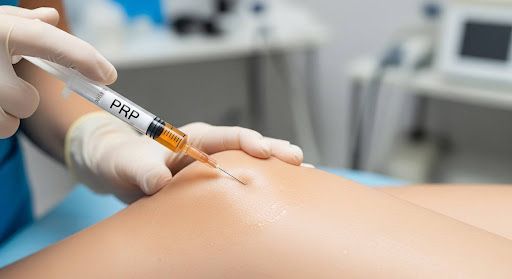Comparing PRP and Laser Therapy for Plantar Fasciitis
Plantar fasciitis is one of the most common causes of heel pain, affecting millions of people each year. Characterized by inflammation of the thick band of tissue that runs across the bottom of your foot, this condition can be stubborn and interfere with daily activities. As more patients seek non-surgical, drug-free solutions, two innovative treatments have emerged as front-runners: Platelet-rich plasma (PRP) injections and laser therapy. At Chronic Care of Richmond, we’re committed to helping you understand your options so you can choose the treatment that best aligns with your needs and lifestyle.
Understanding PRP Injections for Plantar Fasciitis
PRP therapy uses your own blood to promote healing. During the procedure, a small sample of your blood is drawn and placed in a centrifuge to concentrate the platelets. These platelets, which are rich in growth factors, are then injected directly into the site of pain. The idea is to stimulate your body’s natural healing processes, potentially speeding up recovery and reducing pain.
Who Is Eligible for PRP Injections?
PRP injections are generally recommended for patients who have not found relief through conservative treatments such as physical therapy, orthotics, or stretching. Since it uses your own blood, the risk of allergic reaction is minimal. However, individuals with certain blood disorders, active infections, or specific chronic illnesses may not be ideal candidates.
Expected Results and Recovery Timeline
Patients typically notice gradual improvement over several weeks, as the healing process takes time to unfold. PRP injections can significantly reduce pain and improve function in patients with chronic plantar fasciitis, especially when compared to corticosteroid injections or placebo treatments. Most patients return to normal activities within a few days, though strenuous exercise should be limited initially to allow for optimal healing.
Cost Considerations for PRP Therapy
PRP is considered a regenerative medicine treatment and is not always covered by insurance. Costs can vary based on the provider, location, and the number of sessions required. At Chronic Care of Richmond, we work with patients to create transparent pricing plans and discuss all available options before beginning treatment.
Exploring Laser Therapy for Plantar Fasciitis
Laser therapy, also known as low-level laser therapy (LLLT) or cold laser therapy, is a non-invasive treatment that uses specific wavelengths of light to penetrate the skin and stimulate tissue repair. The light energy is absorbed by damaged cells, which can accelerate the healing process, reduce inflammation, and alleviate pain.
Candidate Suitability for Laser Therapy
Laser therapy is suitable for a wide range of patients, including those who may not be candidates for injections. Because it is non-invasive and does not involve medication, it is especially appealing to individuals seeking gentle, evidence-based alternatives. Laser therapy can be used alongside other treatments such as physical therapy, making it a versatile component of a comprehensive care plan.
Expected Outcomes and Timeline
Many patients experience a reduction in pain and inflammation after just a few sessions, with optimal results often achieved after a series of treatments over several weeks. Laser therapy can significantly reduce heel pain and improve mobility in individuals with plantar fasciitis. Unlike PRP, there is no downtime, and patients can return to their daily routines immediately following each session.
Financial Considerations for Laser Therapy
Laser therapy is often more accessible in terms of cost, particularly for those without insurance coverage for regenerative treatments. The total expense will depend on the number of sessions required, which is determined based on the severity and duration of the condition.
Comparing PRP and Laser Therapy: Key Differences
When comparing PRP and laser therapy for plantar fasciitis, it’s important to consider your personal preferences, health history, and lifestyle. PRP injections offer a regenerative approach, harnessing your body’s own healing mechanisms, and can be especially effective for chronic or severe cases. The procedure is minimally invasive and typically requires little downtime, but results may take several weeks.
Laser therapy, on the other hand, is completely non-invasive, with no needles or injections involved. It’s an excellent choice for individuals who prefer a gentle approach or cannot undergo injection-based therapies. The treatment provides rapid relief for many patients, and sessions are quick and convenient.
Both PRP and laser therapy have demonstrated positive outcomes, with improvements in pain, mobility, and overall quality of life. However, individual results can vary, and a consultation with a healthcare professional is essential to determine the most suitable treatment plan.
Making an Informed Choice at Chronic Care of Richmond
At Chronic Care of Richmond, we are dedicated to providing individualized care and evidence-based treatments for plantar fasciitis and other chronic pain conditions. Our team takes the time to thoroughly evaluate your symptoms, medical history, and treatment goals to recommend the most effective options.
Whether you are interested in learning more about PRP injections, laser therapy, or other innovative solutions, we invite you to reach out and schedule a consultation. Our knowledgeable staff is here to answer your questions and support you every step of the way.




